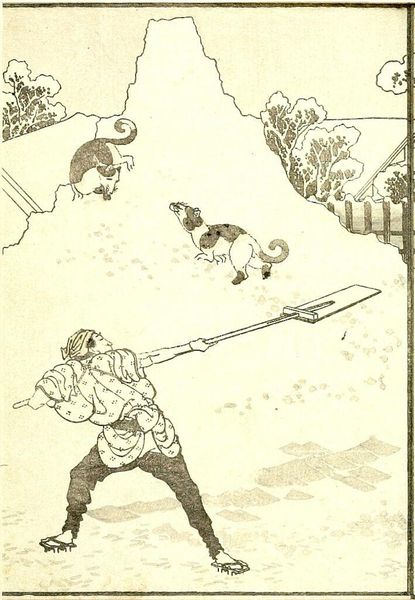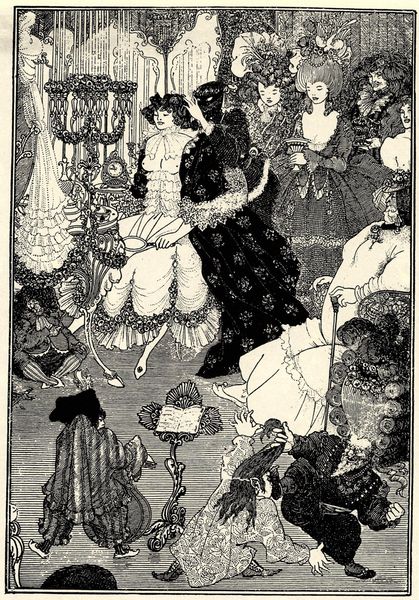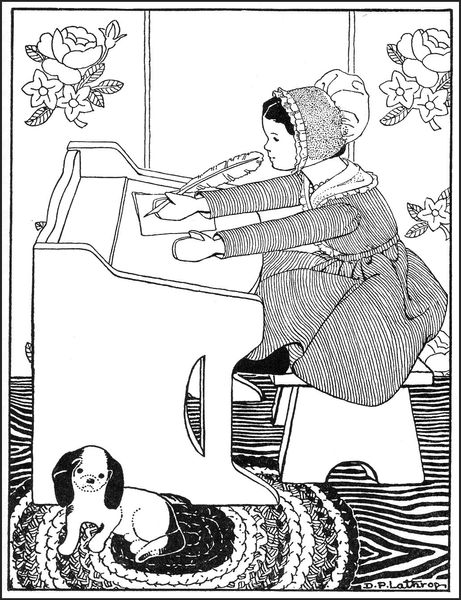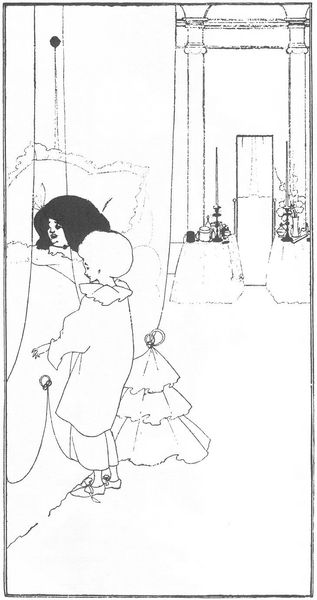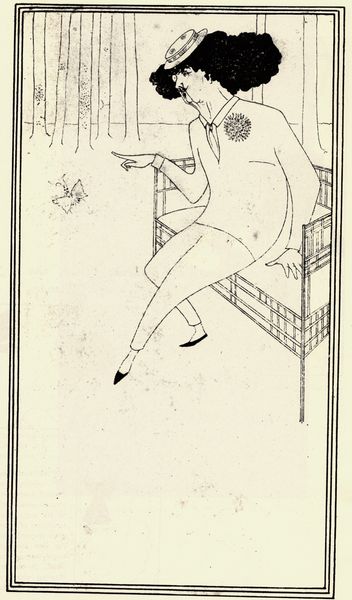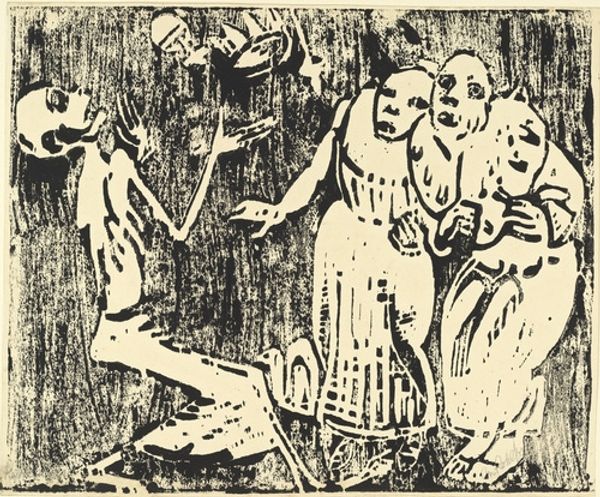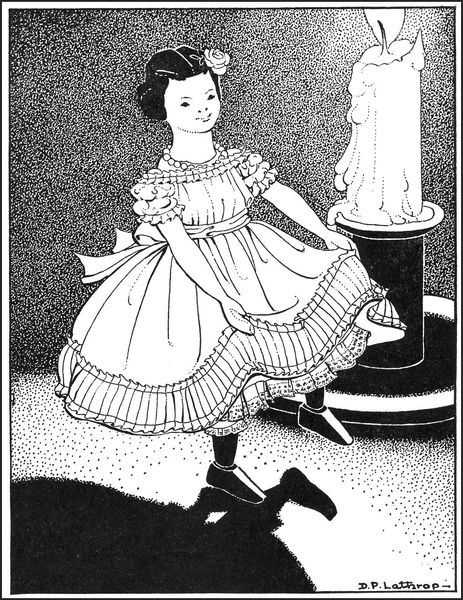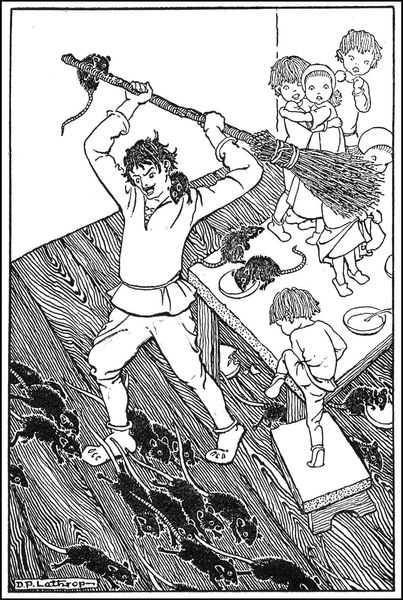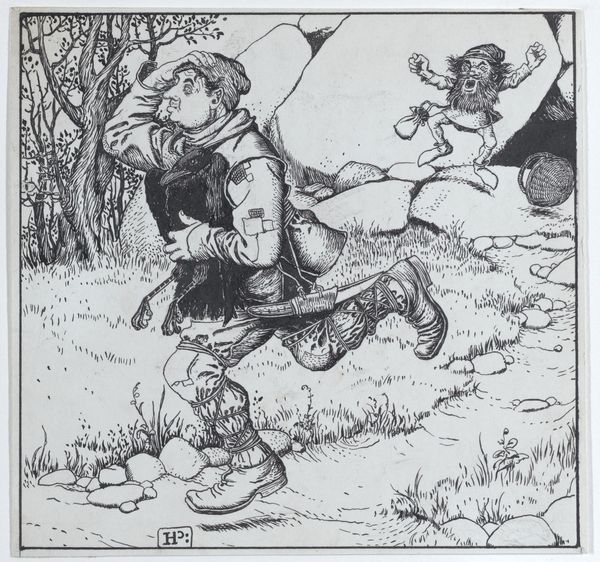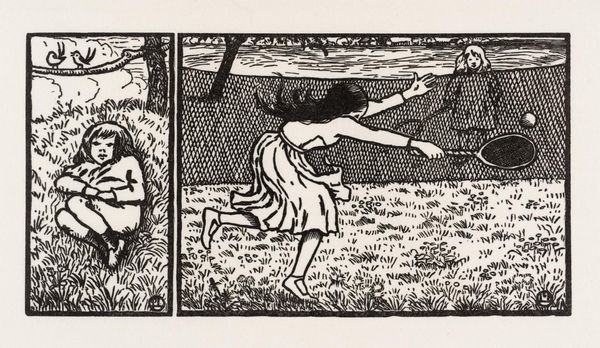
drawing, paper, ink
#
drawing
#
comic strip sketch
#
comic strip
#
pen illustration
#
line drawing illustration
#
figuration
#
paper
#
text
#
ink line art
#
ink
#
line
#
genre-painting
#
graphic novel art
#
line illustration
Copyright: Dorothy Lathrop,Fair Use
Editor: "The Treasure of Carcassonne," drawn by Dorothy Lathrop in 1928 using ink on paper, captures a scene of children playing. There's something whimsical about the line work, and I'm immediately drawn to the joy it seems to convey. What symbols or visual cues jump out at you in this work? Curator: Well, consider the horn the boy is playing. In many cultures, horns announce important events, celebrations, even warnings. Here, it seems celebratory, but could there be a deeper meaning, maybe hinting at a call to adventure, given the title "Treasure of Carcassonne"? The dance also seems significant. Editor: The dance feels spontaneous, almost chaotic, which contributes to the youthful energy. Curator: Exactly. Dance is often symbolic of life itself, full of movement and change. But why Carcassonne? That links us to a specific place and its history. Do you know the history of Carcassonne? Editor: Only that it is an ancient fortified city. Curator: And fortresses have always been linked to ideas of treasure, both tangible and symbolic – knowledge, power, history. This scene could suggest that the real treasure lies not in gold, but in childhood, community, and the joy of simple experiences, set against the backdrop of a historically rich site. It is a call for all generations, don't you think? Editor: That adds a layer of complexity I hadn't considered, seeing the children's play as connected to something much larger than just a game. Thank you! Curator: My pleasure, it has given me fresh ideas as well. Looking at art can take many views.
Comments
No comments
Be the first to comment and join the conversation on the ultimate creative platform.
